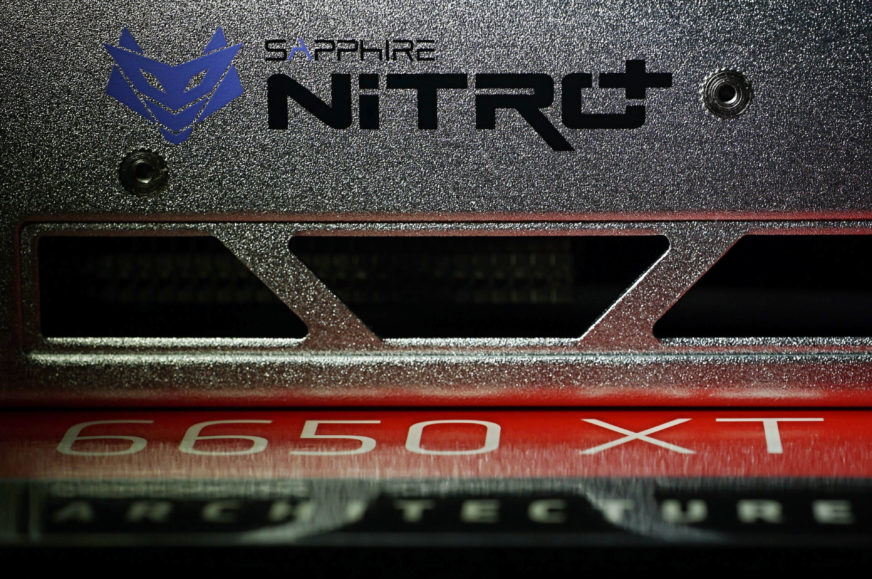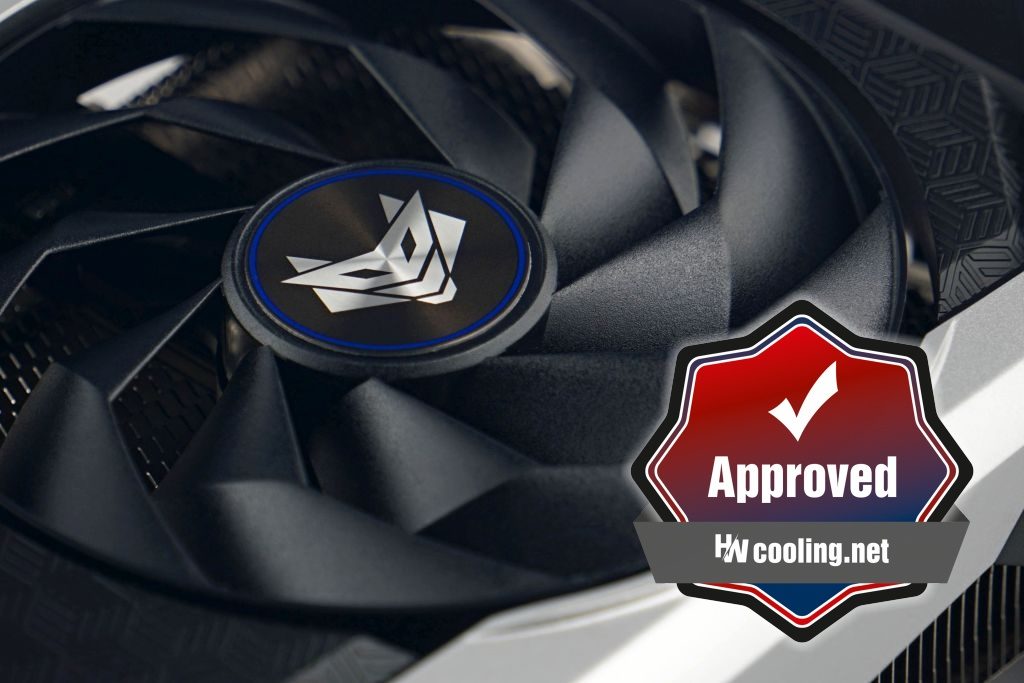Conclusion
The Radeon RX 6650 XT replaces the RX 6600 XT in AMD’s lineup. That one beats the GeForce RTX 3060 in performance under certain circumstances, but always only narrowly. Now, after the GPU’s frequency and memory bandwidth increase, Radeon’s dominance is clear, and yet efficiency is still on AMD’s side. The non-reference Sapphire Nitro+ design is also super-quiet – the cooler is now quite a bit more robust.
Conclusion
In designation, the new Radeon 6650 XT is exactly between the RX 6600 XT and RX 6700 XT, but performance-wise it’s considerably closer to the RX 6600 XT. Depending on resolution, the increase in average gaming performance over the RX 6600 XT is 4–6 % (it’s a 9–19 % loss compared to the RX 6700 XT). That’s admittedly relatively little, but it’s enough to make the competing GeForce RTX 3060 significantly weaker, and the Radeon might even eclipse Nvidia’s advantage in faster raytracing graphics a bit.
At Full HD resolution, which is where this class of graphics card is headed, the RX 6650 XT has a 9 % edge over the RTX 3060.Sure, version to version that difference may vary a bit, but the Radeon always ends up winning. And yet even the RX 6650 XT Nitro+, operating at GPU frequencies up to around 2700 MHz, is in practice a more economical option than the slower GeForce RTX 3060. When comparing the Sapphire Nitro+ (RX 6650 XT) to the Gigabyte Eagle OC (RTX 3060), the Radeon has a 7 % edge in FHD resolution. In QHD it’s already even and in UHD the GeForce is more effective, as with increasing resolution, the RX 6650 XT is losing its lead. It doesn’t matter that much, though, as the RTX 3060 doesn’t have UHD ambitions either. But there are games that you can play smoothly at this high resolution even on this class of graphics card.
For example FIFA, Forza Horizon 4 or F1 2020 in Ultra HD run better on the RX 6650 XT, but Age of Empires II: DE, DOOM Eternal or Wasteland 3 do on the RTX 3060. In Full HD, however, it’s hard to find titles where Radeon has pulled the short end of the stick. You’ll probably come across some, but they’ll certainly be at a numerical disadvantage. Of the eighteen games we tested, the RTX 3060 has the edge only in Total War Saga: Troy. In Borderlands 3, the RX 6650 XT is up to 33 % faster, in Battlefield V by 27 % (not true for running with raytracing, with it the Radeon is weaker, at most/on Ultra by 8 %), in Cyberpunk 2077 and Shadow of the Tomb Raider by 10 % and for example in Mafia DE by 6 %. With raytracing, however, Radon is mostly weaker, one exception being the original Metro Exodus, which achieves equal performance.
In computational tests, GeForce usually has the upper hand, but there are also cases where Radeon is ahead. Compared to the RTX 3060, for example, we also saw a smaller drop in gaming fps during video recording via AMD VCE, both in OBS and in Xsplit.
Of particular note is the significantly higher power draw of the RX 6650 XT compared to the RX 6600 XT when decoding HEVC and VP9 video. However, this may apply exclusively to the Sapphire Nitro+ graphics card tested, and may just be a matter of early drivers. The off-load power draw is pretty much as expected though, it’s only 3W higher than the RX 6600 XT.
With two monitors at the output, power draw may be higher than with the RX 6700 XT as memory speeds rise and the RX 6650 XT has faster, 17.5 GHz modules. The increase in power draw (and high VRAM frequencies) may not happen if you have two lower resolution monitors (something like 2x FHD), but otherwise count on a roughly fivefold increase in power draw. And it’s already been hinted that AMD has hopefully worked on more efficient multi-monitor operation. Anyway, even with the RX 6650 XT it’s still “only” around 37W, which doesn’t require active cooling. And even when the fan does kick in at higher loads, it always stays at low speed and cooling is quiet and GPU temperature is pleasantly low. More demanding users will suffer from the sound of the coils rather than aerodynamic noise. We’re not saying they’re noisy, but alongside the quiet fans, this is a relatively intense noise component. We’ve had more powerful cards with quieter coils before.
The Sapphire RX 6650 XT Nitro+ is an attractive graphics card, as long as the pricing really stays at the RX 6600 XT level and isn’t more expensive than the RTX 3060 in an equivalent design. Although the clearance RX 6600 XT will probably feature a better price/performance ratio in the time before they disappear from the market.
English translation and edit by Jozef Dudáš
| Sapphire RX 6650 XT Nitro+ |
| + High performance, optimal for 1080p gaming |
| + Under normal circumstances a favourable price/performance ratio |
| + Relatively low power draw |
| + Still decent efficiency, higher than GeForce RTX 3060 |
| + Effective cooler. Low temperature and at the same time quiet running of the fans |
| + First-class structural design... |
| + ... robust and most importantly easy to service fans |
| - Higher power draw during video playback |
| - Lower performance for raytracing graphics than the RTX 3060 |
| Recommended retail price: 539 EUR |
Games for testing are from Jama levova
- Contents
- Sapphire RX 6650 XT Nitro+ in detail
- Specifications table
- Methodology: performance tests
- Methodology: how we measure power draw
- Methodology: noise and sound measurement
- Methodology: temperature tests
- Test rig
- 3DMark
- Age of Empires II: DE
- Assassin’s Creed: Valhalla
- Battlefield V
- Battlefield V s DXR
- Borderlands 3
- Control
- Control s DXR
- Counter-Strike: GO
- Cyberpunk 2077
- Cyberpunk 2077 with DXR
- DOOM Eternal
- F1 2020
- FIFA 21
- Forza Horizon 4
- Mafia: DE
- Metro Exodus
- Metro Exodus s DXR
- Microsoft Flight Simulator
- Red Dead Redemption 2 (Vulkan)
- Red Dead Redemption 2 (Dx12)
- Shadow of the Tomb Raider
- Shadow of the Tomb Raider s DXR
- Total War Saga: Troy
- Wasteland 3
- Overall gaming performance and performance per euro
- CompuBench (OpenCL)
- SPECviewperf 2020 and SPECworkstation 3
- FLOPS, IOPS and memory speed tests
- 3D rendering 1/2 (LuxMark and Blender@Cycles)
- 3D rendering 2/2 (Blender@Radeon ProRender and Eevee)
- Photo editing (Adobe Photoshop, Lightroom and Affinity Photo)
- Broadcasting (OBS and Xsplit)
- Password cracking
- GPU clock speed
- GPU temperatures
- Net graphics card power draw and performance per watt
- Analysis of 12 V branch power supply (higher load)
- Analysis of 12 V branch power supply (lower load)
- Analysis of 3.3 V branch power supply
- Noise level
- Frequency response of sound
- Conclusion













